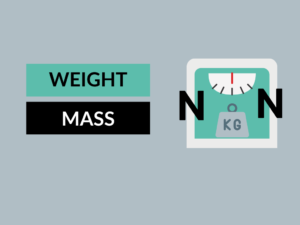Difference Between Mass and Volume
What is Mass?
Mass is a fundamental property of matter that measures the amount of substance it contains. It is a scalar quantity and is expressed in kilograms (kg) or grams (g). Mass refers to the quantity of matter present in an object regardless of its location.
Examples of Mass
Here are a few examples to help you understand the concept of mass:
- A watermelon has a mass of 5 kg.
- The mass of a cricket ball is 0.16 kg.
- An elephant has a mass of about 5000 kg.
Uses of Mass
The concept of mass is used in various fields. Some common uses of mass include:
- Calculating the weight of an object using the formula weight = mass × acceleration due to gravity.
- Smooth running of machinery where mass plays a crucial role in balancing and stability.
- Understanding the behavior of objects under the influence of external forces.
What is Volume?
Volume is the quantity of three-dimensional space occupied by an object or a substance. It is also a scalar quantity and is measured in cubic units such as cubic meters (m3) or liters (L).
Examples of Volume
Here are a few examples to give you a better understanding of volume:
- A cube with side lengths of 1 meter has a volume of 1 cubic meter.
- A swimming pool can have a volume of 50,000 liters.
- A rectangular box with dimensions 2 meters, 3 meters, and 4 meters has a volume of 24 cubic meters.
Uses of Volume
Volume finds its applications in various fields. Here are some common uses of volume:
- Determining the amount of a substance required for a specific task.
- Calculating the concentration of a solution.
- Designing containers and storage units based on their capacity.
Differences Between Mass and Volume
| Difference Area | Mass | Volume |
|---|---|---|
| Definition | Quantity of matter in an object | Amount of space occupied by an object |
| Measurement Unit | Kilograms (kg), grams (g) | Cubic meters (m3), liters (L) |
| Scalar/Vector | Scalar | Scalar |
| Representation | M | V |
| Symbol | m | V |
| Dependence on Gravity | Mass is not affected by gravity. | Volume can change with respect to gravity. |
| Specific Formula | Mass = Density × Volume | Volume = Mass / Density |
| Addition/Combination | Masses of objects can be added or combined. | Volumes of objects cannot be added or combined directly. |
| Conservation | Mass is conserved in a closed system. | Volume is not necessarily conserved in a closed system. |
| Property of Substance | Mass is an intrinsic property. | Volume is dependent on both the object’s shape and the substance. |
| Effect of Temperature | Mass is not significantly affected by temperature. | Volume tends to increase with temperature for most substances. |
Conclusion
In summary, mass and volume are both important properties used to describe objects. While mass refers to the quantity of matter within an object, volume relates to the amount of space occupied by that object. Mass is often measured in kilograms or grams, while volume is measured in cubic meters or liters. Understanding these differences is crucial for various scientific and everyday applications.
Knowledge Check
- True or False: Mass and volume are vector quantities.
- What is the unit of mass?
- Does mass depend on gravity?
- What formula relates mass and volume?
- Can volumes of objects be added or combined directly?
- Is volume a conserved property in a closed system?
- Which property is dependent on both the object’s shape and the substance?
- How does volume typically change with temperature?
- Is mass affected significantly by temperature?
- Are mass and volume scalar or vector quantities?
Answer: False
Answer: Kilograms (kg), grams (g)
Answer: No, mass is not affected by gravity.
Answer: Mass = Density × Volume
Answer: No, volumes of objects cannot be added or combined directly.
Answer: No, volume is not necessarily conserved in a closed system.
Answer: Volume
Answer: Volume tends to increase with temperature for most substances.
Answer: No, mass is not significantly affected by temperature.
Answer: Both mass and volume are scalar quantities.
Related Topics
If you found this article on the differences between mass and volume helpful, you may also be interested in the following related topics:
- Density: Explaining the concept of density and its relationship with mass and volume.
- Inertia: Understanding how mass influences an object’s resistance to changes in motion.
- Archimedes’ Principle: Exploring how buoyancy and volume are connected.



